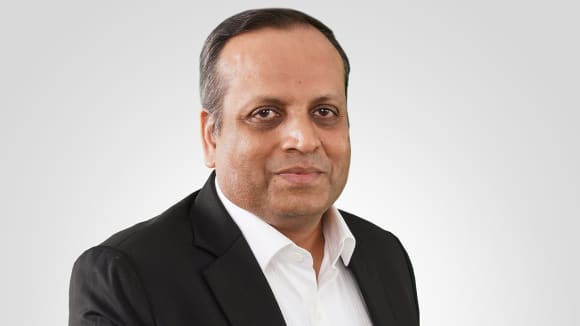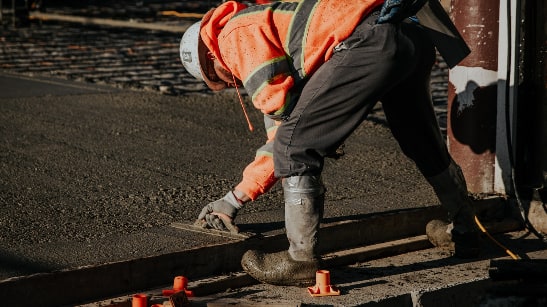The company plans an additional investment to operationalise Vadraj Cement and commence production by Q3 FY27, bringing the total investment in the acquisition to approximately Rs 3,600 crore.

Maneesh Agrawal, Chief Financial Officer, Nuvoco Vistas Corp
The cement company Nuvoco Vistas Corporation plans to refurbish and operationalise the Vadraj Cement facilities by Q3 FY27, with an additional investment of Rs 1800 crore, says the CFO of the company Maneesh Agrawal. Over the next 15–18 months, nearly all of its capital expenditure will be channelled into this project, alongside investments in digitalisation and logistics.
The Nirma Group's cement business company, Nuvoco Vistas, has cleared all legal hurdles in its acquisition of Vadraj Cement, with the National Company Law Appellate Tribunal (NCLAT) recently upholding the earlier National Company Law Tribunal (NCLT) approval of its Rs 1,800 crore resolution plan.
With Vadraj’s plants in Kutch and Surat, Gujarat, now in its fold, Nuvoco is setting its sights on a major capacity ramp-up. Agarwal, in an email interaction with FE CFO also shared the company’s roadmap from capex allocation strategy and market expansion to navigating input costs and long-term profitability. Edited excerpts.
With Nuvoco set to reach 31 MMTPA capacity by Q3 FY27, what is your Capex allocation strategy for FY26? What’s the spend mix between greenfield expansion, capacity ramp-up, and digital infrastructure?
Over the next 15 to 18 months, our foremost priority will be operationalising the recently acquired Vadraj Cement Limited (VCL), which has cement plants in Kutch and Surat, Gujarat. Acquired at the cost of Rs 1,800 crore, this strategic investment represents a significant milestone in Nuvoco’s growth trajectory.
We are going to further invest approximately Rs 1,800 crore towards refurbishing the facilities and commencing production by Q3 FY27. This investment will also include the development of a railway siding, a captive power plant, and the establishment of a new grinding unit in Kutch, thereby strengthening our production and logistics capabilities.
The facility will be upgraded with state-of-the-art technology to enhance operational efficiency and meet Nuvoco’ s rigorous quality standards. Consequently, the majority of our FY26 Capex will be directed towards VCL refurbishment and associated infrastructure.
In parallel, we will continue to strengthen our digital backbone by deploying automation, AI-driven optimization, and IoT-enabled systems to make operations smarter, faster, and more resilient across all manufacturing units. Additionally, we will incur an annual maintenance Capex of Rs 100 to Rs 150 crore.
Given the recent acquisition of Vadraj Cement and your strong foothold in East and North India, what’s the strategic outlook for market expansion in FY26–FY27? Any new regional or export-focused opportunities?
The Vadraj acquisition is a strategic leap that broadens our market reach while enhancing our competitive positioning in key markets.
Once operational by Q3 FY27, VCL will significantly strengthen our presence in the Gujarat market while reinforcing our leadership in the East. With this addition, we will become the third-largest cement producer by capacity in the combined Gujarat market. Importantly, it will also allow us to consolidate our presence in Northern markets, as capacity at our Rajasthan facilities, currently catering to Gujarat, will be redirected to serve the Northern region after the Vadraj plant becomes operational.
Our focus remains firmly on the Indian market, where we see substantial growth potential through deeper market penetration, improved operational efficiency, and the use of technology to deliver greater value to customers.
What are the key growth drivers you foresee over the next 12–18 months will it be volume-led, pricing-led, or margin-driven? How is the demand outlook shaping up?
We remain optimistic about cement demand, driven by significant capital expenditure planned by both the Central and State Governments, particularly in the housing and infrastructure sectors. For FY26, the Central Government has planned a capital outlay of Rs 11 lakh crore, up 10% YoY, while State Governments have increased their outlay by 17% YoY to Rs 9–10 lakh crore. In the eastern states, Rs 38,000 crore has been allocated towards housing programmes.
The rural housing sector is also a critical volume driver, supported by a healthy monsoon forecast that is expected to boost agricultural income and, in turn, construction activity in rural areas. These factors are expected to provide meaningful momentum to cement demand in the coming quarters, with the sector projected to grow at 7–8% in FY26.
We believe that sustained demand growth will continue to support the pricing environment, and we will remain focused on levers such as premiumization, trade-mix, geo-mix, and internal cost-saving programmes to create value for our stakeholders.

The cement sector is capital-intensive and highly sensitive to input costs, energy, and freight. How do you see these dynamics playing out in FY26, and what structural changes are needed for long-term profitability in the industry?
The cement sector is inherently capital-intensive and highly sensitive to fluctuations in input costs, particularly fuels such as coal and petcoke, and raw materials such as slag. Over the past 18 months, key fuel inputs like coal and petcoke — a critical energy source for cement kilns have benefited from relatively favourable demand–supply conditions. However, geopolitical developments will be a key monitorable going forward.
At Nuvoco, we have effectively managed fuel costs by optimising fuel mix between coal, petcoke and alternative fuels. We will continue to pursue this strategy to ensure cost efficiency. On the raw material side, slag, a vital input for producing blended cement, remains constrained in supply. Nuvoco holds a competitive advantage through a long-term supply agreement with a leading steel manufacturer at a competitive cost, ensuring stability in both availability and pricing.
Logistics is another critical cost driver, with timely rake availability playing a pivotal role in keeping transportation and distribution costs under control. Maintaining efficient transportation and supply chain planning will be essential to sustaining cost competitiveness in FY26 and beyond.
For long-term profitability, the industry must continue investing in energy efficiency programmes, expand the use of renewable energy as well as waste heat recovery, and work towards greater multimodal connectivity to optimise logistics costs. These measures will not only help manage cost pressures but also support the sector’s transition to a more sustainable and resilient operating model.
Empower your business. Get practical tips, market insights, and growth strategies delivered to your inbox
By continuing you agree to our Privacy Policy & Terms & Conditions
